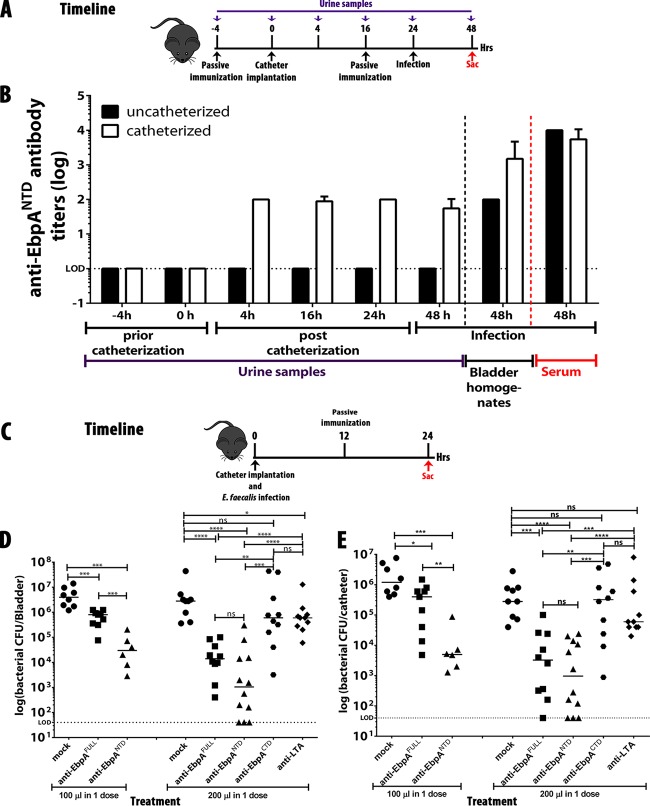FIG 3 .
Release of anti-EbpANTD antibodies into the bladder and urine is mediated by bladder inflammation upon catheterization, and passive transfer of anti-EbpANTD antibodies reduced bacterial titers of an existing E. faecalis infection. (A) Experimental timeline. (B) Detection of anti-EbpANTD antibodies in urine samples, bladder homogenates, and serum samples was analyzed by diluting each sample 1:100 before serial dilution. (C) Experimental timeline. Mice (n = 10) were implanted with catheters and challenged with 1 × 107 CFU of E. faecalis OG1RF. A dose of PBS serum, anti-EbpAFull, anti-EbpANTD, anti-EbpACTD, or anti-group D antibody was administered intraperitoneally (i.p.) at 12 h postinfection (hpi) (anti-EbpAFull, anti-EbpANTD, anti-EbpACTD, and anti-group D antibody titers of 1 × 107). (D and E) Following 24 h of infection, bacterial burdens in bladder tissue (D) or recovered from catheters (E) were quantitated as the number of CFU recovered. Values represent means ± SEM. The Mann-Whitney U test was used; P < 0.05 was considered statistically significant. *, P < 0.05; **, P < 0.005; ***, P < 0.0005; ns, values were not statistically significantly different. The horizontal bar represents the median value. The horizontal broken line represents the limit of detection of viable bacteria. Animals that lost the catheter were not included in this work.

